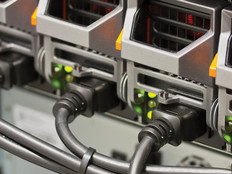19 Numbers That Explain the Internet of Things
The world of connected devices is growing ... fast. These numbers offer some much-needed perspective on the future of government.
With more than 350 million public employees, nearly all governments stand to benefit from the Internet of Things. The connectivity trend is growing quickly, with more devices collecting more data than ever before. But how will this industry look in the next few years? Here are a few numbers to put the enormous potential of the Internet of Things into perspective.
40% Savings on waste collection in Finland, where garbage cans send a signal when pickup is needed (Source) Tweet
60% Boston’s energy savings achieved by dimming street lights when there is no traffic (Source) Tweet
200MB The amount of data transmitted annually by a “connected” cow in the Netherlands (Source) Tweet
$950 Savings per court appearance in the United States through the use of video technology (Source) Tweet
2020 The year by which Volvo aims to eliminate car accidents that result in serious injuries and fatalities (Source) Tweet
<p>alexaldo/iStock/Thinkstock</p>








